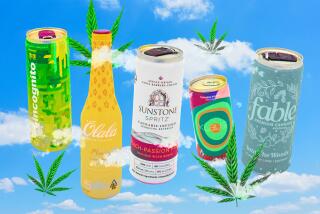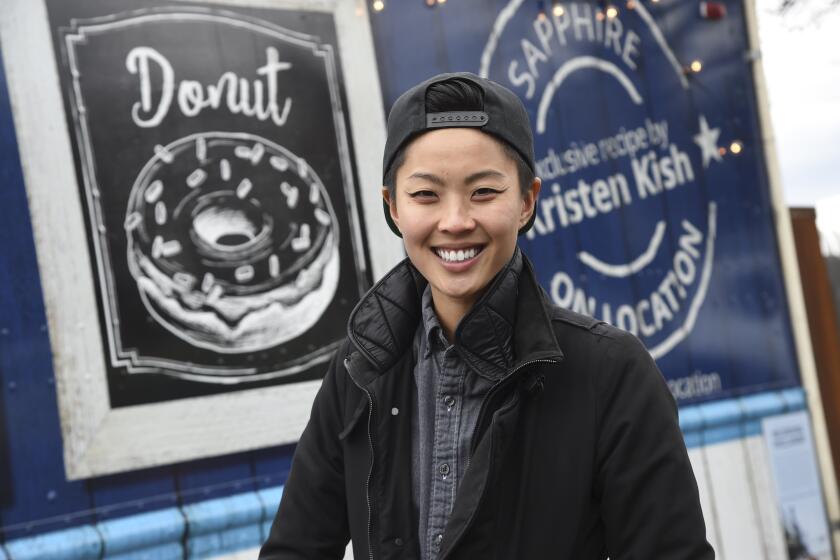Mountain Dew Hits New Heights to Help Pepsi Grab a New Generation
- Share via
Over the years, Mountain Dew has distributed pagers to thousands of youthful consumers and then beeped them with soft drink sales pitches from popular athletes and entertainers. The citrus-flavored drink with the caffeine kick has toured with the alternative music world’s Warped Tour. And the brand recently signed on as a sponsor of the new Gravity Games extreme sports competition.
Despite the steady stream of communication, many of the brand’s youthful fans would be hard-pressed to identify Mountain Dew as a member of the Pepsi Generation. “They don’t know or care who Mountain Dew is owned by,” said Santa Barbara-based beverage industry analyst Tom Pirko. “To them, it’s an irrelevant question. These kids think they own the brand.”
That sense of consumer ownership among young male consumers represents the gold standard for marketers laboring to distinguish brands in an increasingly look-alike world. “PepsiCo has done an extraordinary job of positioning Mountain Dew,” said Peter Sealey, a UC Berkeley adjunct marketing professor and a former Coca-Cola Co. executive. “It’s probably Pepsi’s most successful positioning since the ‘Pepsi Generation’ and the ‘Pepsi Challenge.’ ”
The nation’s fourth-most popular soft drink, Mountain Dew also was the fastest-growing top-10 soda brand last year with a 9.9% increase in cases sold, according to Bedford Hills, N.Y.-based Beverage Digest. Coca-Cola’s Sprite finished second with a 9% increase. Mountain Dew’s 20-ounce bottle is the most popular soft drink sold in convenience stores. And, while the gap is still huge, there’s talk of Mountain Dew some day challenging longtime No. 3 beverage Diet Coke. Indeed, Mountain Dew reportedly is threatening Diet Coke in the so-called at-home category, which excludes fountain sales.
Consumer Tastes Are Changing
Mountain Dew and such flavored soft drinks as Sprite are benefiting from the change in consumer tastes. Cola drinks remain the driving force in the soft drink sector, but market leader Coke Classic was flat in 1998, and Pepsi’s share fell by 0.3%.
“Cola, no matter how well you advertise it, is very mature as a brand,” Pirko said. “And that means there’s more and more opportunity for other kinds of drinks, including Mountain Dew and Sprite. Look at bottled waters, which are growing at the expense of colas, particularly diet colas.”
Mountain Dew benefits from the fact that, unlike Sprite, its secret recipe includes caffeine. “It’s almost a stealth cola with that caffeine,” Sealey said. “It’s no accident that the top three drinks around the world are coffee, tea and colas--and each contains caffeine.”
Mountain Dew’s success, observers say, is a textbook example of how to reposition a brand. As the 1980s dawned, Pepsi was still pitching the brand as a hillbilly drink with commercials that urged consumers to “tickle your innards.” Pepsi and longtime ad agency BBDO New York successfully repositioned the drink during the 1980s as an alternative for savvy youth.
The brand’s dramatic growth was jump-started by the “Dew the Dew” campaign that began in 1995. The campaign is aimed squarely at young males--but manages to embrace such diverse talents as crooner Mel Torme and punk rocker Johnny Rotten. Action-packed commercials revolve around four dudes (Dewds?) who’ve never met a mountain high enough to keep them from grabbing a snowboard.
Commercials are still populated by guys engaged in extreme sports. But marketers have broadened the campaign’s appeal through the addition of urban-oriented commercials starring actor Jackie Chan, athlete Michael Johnson and rapper Busta Rhymes. Pepsi also is incorporating young women into the ads.
“The key to creativity is keeping it fresh, again and again and again,” said Ted Sann, BBDO co-chief executive and chief creative officer. “But we know we’re creating [advertising] in a prescribed space, that we have a product with a certain attitude and dimension. We know we have to be true to the message we’re trying to convey.”
Mountain Dew’s consistent message to young males has turned the drink into “one of the two or three strongest brands in the beverage industry today,” said Beverage Digest Publisher John Sicher. “Pepsi has done a masterful job of marketing Mountain Dew.”
No Time to Gloat for Dew’s Marketers
Coke hasn’t been sitting idly on the sidelines. It has attacked Mountain Dew with a pair of citrus-flavored drinks that contain caffeine. “On my time, Coca-Cola had Mello Yello, and my successors had Surge,” Sealey said. “But both were dead in the water compared to Mountain Dew.”
Mountain Dew’s marketers know that they can’t afford to gloat about the brand’s transformation from hayseed country cousin to a beverage of choice among savvy young consumers. Soft drink veterans are only too aware of the success enjoyed by Sprite, which, 20 years ago was a distant second to category leader 7 Up. Coke’s marketing might turned Sprite into the fifth-most popular soft drink--and relegated 7 Up to the No. 8 spot.
Mountain Dew’s ability to one day challenge Diet Coke will be determined by whether the brand can begin to compete on equal footing with Sprite in restaurants and movie theaters--outlets where Coca-Cola’s fountain sector has long dominated Pepsi’s syrup distribution system.
Challenging Diet Coke on the Home Front
Mountain Dew also must continue to build strength in grocery stores where the most important customers are mothers who stock the family refrigerator. According to a recent report in the trade publication Advertising Age, Mountain Dew soon may overtake Diet Coke in soft drink sales for home consumption.
It’s only natural, marketers say, for Pepsi to push beyond Mountain Dew’s core demographic. But the soft drink giant must move gingerly to avoid dulling the brand’s razor-sharp positioning.
“That’s what it’s all about,” said Steve Horn, Pepsi’s vice president of marketing for non-cola brands. “We don’t want to do it in a way that makes our core customers question us.”
The “Dew the Dew” campaign eventually will age, and, as it does, Pepsi will face the added challenge of keeping its marketing fresh. Scott Moffitt, Mountain Dew’s director of marketing, recognizes that challenge: “There’s a level of conviction out there [among Dew fans] that you can’t fake. You can’t preach to them or tell them what’s cool. You have to connect with them on a level that’s beyond the superficial.”
(BEGIN TEXT OF INFOBOX / INFOGRAPHIC)
Dew Point
Colas continue to dominate the soft drink industry, but growth is being fueled by flavored drinks such as Mountain Dew and Sprite. Market share of the top 10 sodas:
Coke Classic: 20.6%
Pepsi: 14.2
Diet Coke: 8.6
Mountain Dew: 6.7
Sprite: 6.6
Dr. Pepper: 6.1
Diet Pepsi: 5.4
7 Up: 2.1
Diet Coke (Caffeine-free) 1.8
Minute Maid: 1.2
*
Source: Beverage Digest
More to Read
Eat your way across L.A.
Get our weekly Tasting Notes newsletter for reviews, news and more.
You may occasionally receive promotional content from the Los Angeles Times.










